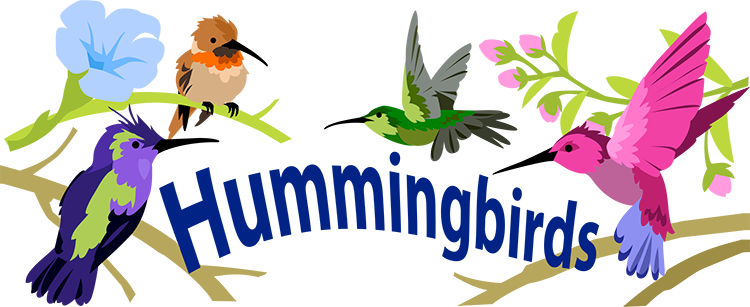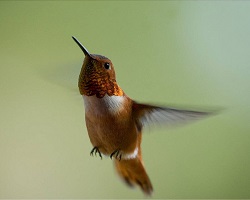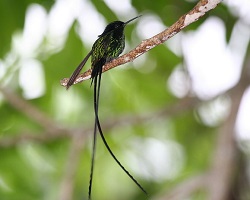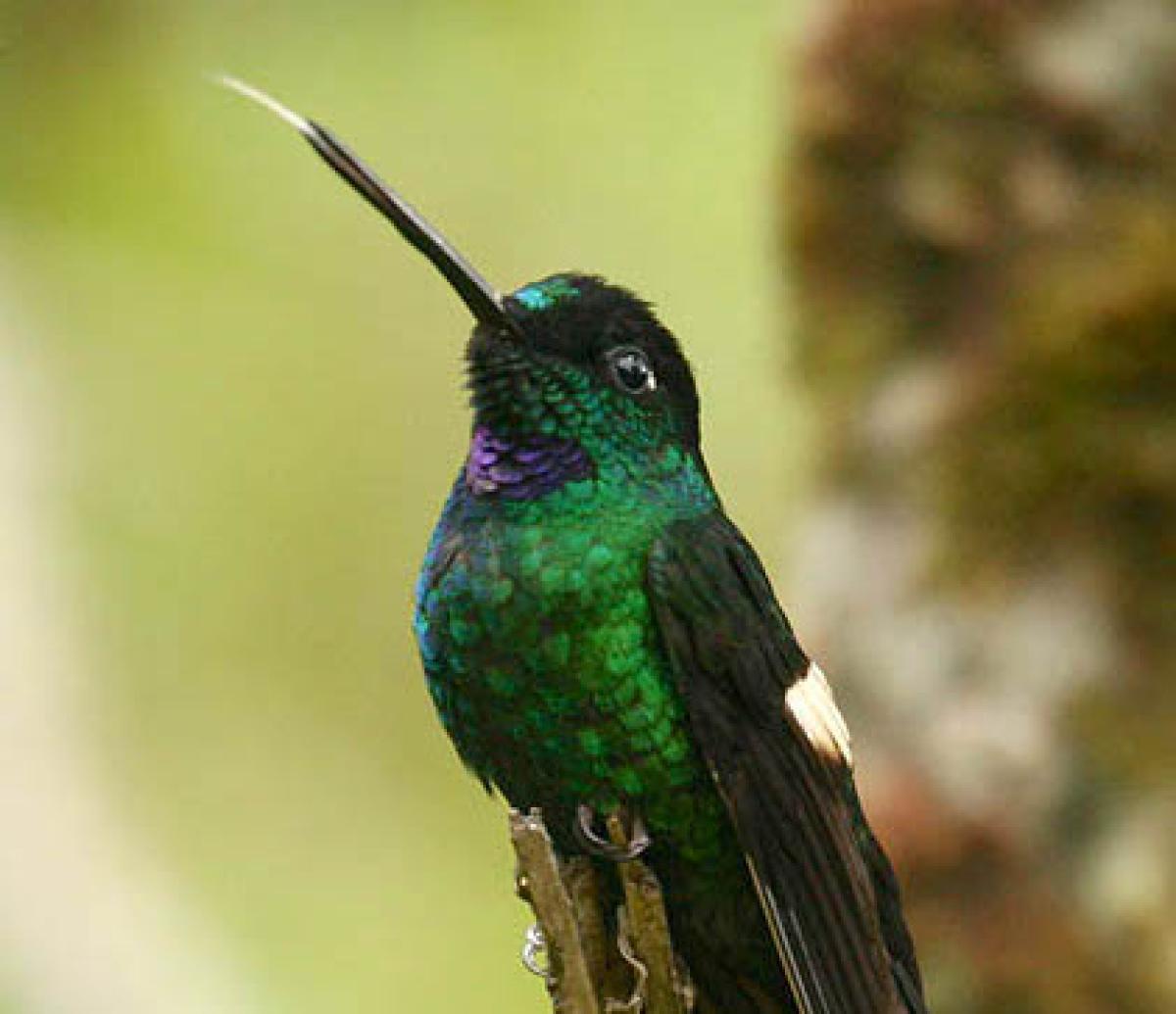
Illustrated by: Sabine Deviche
Hummingbirds: Good Things in Small Packages

Imagine you see a patch of beautiful tube-like flowers as bright as the sunset. You lean close, wondering whether they'll smell of honeysuckle or roses.
A chirp surprises you, and you look up to see a flash of purple and green no bigger than your thumb hovering over the flowers. It blurs past you and up into the trees.

Is that thing that buzzed by your head an insect? No. It's a hummingbird.
If you spend some time watching hummingbirds you will see they have a big attitude, and yet these little daredevils are the smallest birds in the world. Many species wear flashy colors that make other birds look dull. With their amazing flying abilities, color, and the size, hummingbirds are one of the most famous groups of birds in the Americas.
The Geography of Hummingbirds
People who live in Europe, Asia, Africa or Australia can put out a hummingbird feeder every day, but they will never attract a single hummingbird to their gardens.

All hummingbirds are native to North, Central or South America. Not a single species of hummingbird lives outside of the Americas.
Scientists know of about 338 species of hummingbirds, and more are likely to be discovered. However, if you live in North America, you may have only seen one or two species of hummingbirds in your life.
Most hummingbirds live in Central or South America because hummingbirds are most common near the equator where there are flowers year-round.
Only sixteen species live in North America, and only a few hardy species live as far north as Alaska.
Hummingbird Diversity

All hummingbirds are small, nectar-eating birds. They have large heads (relative to body size) and flexible wings. Their feet are so tiny that these birds, along with a group of insect-eating aerial acrobats called the swifts, are called the Apodiformes, which means "no feet."
However, once you look past these similarities, hummingbirds are very diverse. Their beaks come in different lengths and shapes, depending on the sort of flower they most like to visit. The smallest weighs less than a United States penny. The largest would weigh little more than a pile of ten pennies.
Hummingbirds also come in many colors and patterns. But not every species of hummingbird is colorful, and even among the most colorful species, females are usually plain green or brown.
Visit a Virtual Hummingbird Feeder
Take a spin inside our virutal hummingbird world. This is a 360 virtual image filled with close-up images and information about several speices of these tiny birds. Before you enter the tour, you might want to take a quick look at the navigation icons you wil have available once you enter.
Bottom Menu Icons

Zoom into the VR image.
Zoom out from the VR image.
Auto rotate the VR image.
Open and close the tour thumbnail images.
Move between sterographic image options.
Enter full screen.
Exit full screen.
Tour Icons

Information Icon - information about a point of interest in the biome.
Location Icon - takes you to a different location in the biome.
Image Icon – opens close-up image of animal or plant.
Time Travel Icon – Move forward in time in the same location.
Time Travel Icon – Move backward in time in the same location.
Video Icon – opens and plays videos.
Leave Virtual Tour – Leave the tour and go to additional information.
Enter Virtual Hummingbird Feeder

Take a look around this hummingbird feeder. As you explore, take notes on the types of hummingbirds, you find. If you like this virtual hummingbird feeder, try the companion hummingbird experiment and see these birds in the real world.
- How many hummingbirds can you find?
- How many species of hummingbirds did you find?
- How are they different?
Images via Wikimedia Commons. Buff-winged Starfrontlet by Michael Woodruff.
Virtual Hummingbird Feeder by CJ Kazilek. 360 VR image taken in Keystone Colorado.
Read more about: Hummingbirds
Bibliographic details:
- Article: Hummingbirds
- Author(s): Stephanie Bittner
- Publisher: Arizona State University School of Life Sciences Ask A Biologist
- Site name: ASU - Ask A Biologist
- Date published: 6 May, 2014
- Date accessed:
- Link: https://askabiologist.asu.edu/explore/hummingbirds
APA Style
Stephanie Bittner. (Tue, 05/06/2014 - 20:44). Hummingbirds. ASU - Ask A Biologist. Retrieved from https://askabiologist.asu.edu/explore/hummingbirds
Chicago Manual of Style
Stephanie Bittner. "Hummingbirds". ASU - Ask A Biologist. 06 May 2014. https://askabiologist.asu.edu/explore/hummingbirds
Stephanie Bittner. "Hummingbirds". ASU - Ask A Biologist. 06 May 2014. ASU - Ask A Biologist, Web. https://askabiologist.asu.edu/explore/hummingbirds
MLA 2017 Style

This male buff-winged starfrontlet has colorful feathers to attract females. Try out this companion hummingbird experiment to learn more about these tiny colorful birds.
Be Part of
Ask A Biologist
By volunteering, or simply sending us feedback on the site. Scientists, teachers, writers, illustrators, and translators are all important to the program. If you are interested in helping with the website we have a Volunteers page to get the process started.


